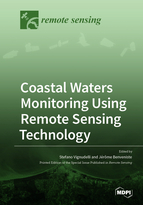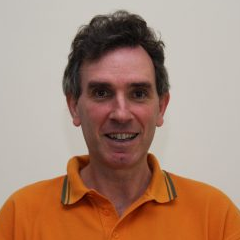Coastal Waters Monitoring Using Remote Sensing Technology
A special issue of Remote Sensing (ISSN 2072-4292). This special issue belongs to the section "Ocean Remote Sensing".
Deadline for manuscript submissions: closed (30 November 2020) | Viewed by 91069
Special Issue Editors
Interests: ocean and land remote sensing; satellite radar altimetry; water level; coastal zone; inland waters
Special Issues, Collections and Topics in MDPI journals
Interests: earth observation; geodesy; geoid; oceanography; sea level; ocean dynamics; hydrology; river discharge; cryosphere; climate change; water cycle; GOCE; CryoSat; Sentinel-3; Sentinel-6; Sentinel-3NG-Topo; CRISTAL; MAGIC/NGGM
Special Issues, Collections and Topics in MDPI journals
Special Issue Information
Dear Colleagues,
At present, about 10% of the global population lives in the world’s coastal zones, mostly concentrated in the world’s largest megacities. In many regions, population is exposed to a variety of natural hazards (e.g., extreme weather, such as damaging cyclones and storm surges), to consequences of global climate change (e.g., sea level rise), and to the direct impacts of human activities. In low lying coastal areas, some factors combine negatively, thus increasing risks for coastal dwellers. For example, climate-related sea level rise increases the risk of flooding and coastal erosion during extreme events and can also cause salt water intrusion into rivers and coastal aquifers on which people depend. Land subsidence, caused by groundwater extraction in coastal megacities, is another example of an amplifier of the impacts of climate-related sea level rise. In addition, because of strong anthropogenic pressures, coastal zones are already suffering ecological and biological stresses, for example, poor water quality, pollution, and destruction of marine ecosystems.
Space-based observations, complemented by in situ networks, have demonstrated their capability to provide precise and systematic information about processes acting in the world coastal zones, among them extreme events and phenomena related to climate change and variability, as well as changing conditions due to human activities.
This Special Issue will focus on the use of remote sensing to monitor coastal waters. It will cover the following topics:
- Coastal sea level changes and causes;
- Extreme events (storm surges and cyclones);
- Wave patterns and energy;
- Small-scale shelf currents;
- Temperature and salinity variations;
- Ocean tides;
- River flow and river plumes;
- Land–sea interaction in large deltas;
- Water quality;
- Coastal marine ecosystems;
- Ocean water acidification and deoxygenation.
Dr. Stefano Vignudelli
Dr. Jérôme Benveniste
Guest Editors
Manuscript Submission Information
Manuscripts should be submitted online at www.mdpi.com by registering and logging in to this website. Once you are registered, click here to go to the submission form. Manuscripts can be submitted until the deadline. All submissions that pass pre-check are peer-reviewed. Accepted papers will be published continuously in the journal (as soon as accepted) and will be listed together on the special issue website. Research articles, review articles as well as short communications are invited. For planned papers, a title and short abstract (about 100 words) can be sent to the Editorial Office for announcement on this website.
Submitted manuscripts should not have been published previously, nor be under consideration for publication elsewhere (except conference proceedings papers). All manuscripts are thoroughly refereed through a single-blind peer-review process. A guide for authors and other relevant information for submission of manuscripts is available on the Instructions for Authors page. Remote Sensing is an international peer-reviewed open access semimonthly journal published by MDPI.
Please visit the Instructions for Authors page before submitting a manuscript. The Article Processing Charge (APC) for publication in this open access journal is 2700 CHF (Swiss Francs). Submitted papers should be well formatted and use good English. Authors may use MDPI's English editing service prior to publication or during author revisions.
Keywords
- Satellite remote sensing
- Radar altimetry, synthetic aperture radar
- Coastal zones
- Sea level change
- Ocean dynamics
- River discharge
- Waves
- Currents
- Water quality
- Ground subsidence
- Sediment supply
- Large deltas
- Coastal impacts of climate change







